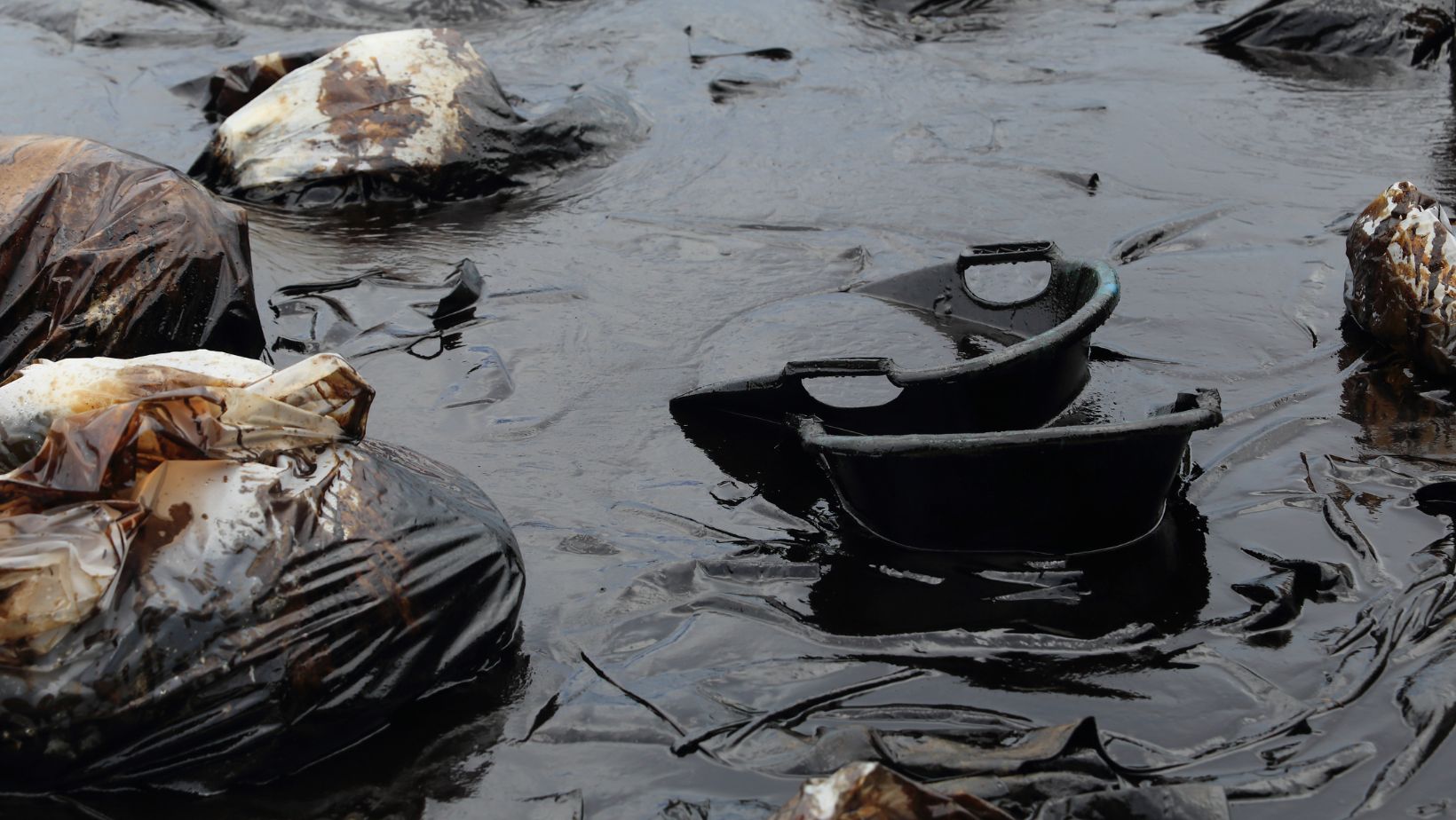AFFF, or Aqueous Film Forming Foam, might conjure images of heroic firefighters battling blazes. However, the story behind this firefighting agent takes a dark turn when we consider its lasting impact on communities. Beyond extinguishing flames, the foam leaves behind a legacy of contamination, silently poisoning the environment and threatening the well-being of residents.
This article discusses the far-reaching effects of AFFF contamination. We’ll explore how it goes beyond just dirty water to disrupt lives, economies, and even the social fabric of communities.
Contents
Table of Contents
ToggleHealth Risks of AFFF Contamination
Exposure to per- and polyfluoroalkyl substances (PFAS) from AFFF contamination poses significant health risks to communities. PFAS chemicals can enter the human body through various pathways in contaminated environments. Residents may ingest PFAS by drinking contaminated water, consuming fish from affected waterways, inhaling PFAS-laden dust particles, or absorbing them through skin contact.
The health consequences of this exposure are alarming and well-documented. PFAS have been linked to a range of serious health conditions. They include certain cancers, thyroid disorders, immune system dysfunction, and developmental problems in children. These toxic chemicals accumulate in the body over time, persisting in organs and tissues, and increasing the risk of chronic health effects.
According to AboutLawsuits.com, the state of Ohio’s response to the AFFF contamination crisis underscores the urgency of addressing PFAS exposure. Ohio Governor Mike DeWine’s initiative, known as the AFFF Takeback Program, reflects a proactive approach to mitigating health risks posed by the contamination. This initiative aims to collect and destroy the state’s stockpiles of PFAS-based firefighting foam.
Moreover, TruLaw notes that lawsuits against manufacturers of the foam highlight the legal ramifications of PFAS contamination. Plaintiffs seek accountability for the widespread water contamination and health risks associated with its exposure.
The AFFF lawsuit underscores the need for stricter regulations on its use, comprehensive cleanup efforts, and compensation for affected communities.
As awareness of the health risks of PFAS exposure grows, urgent action is needed to protect public health and prevent further harm.
AFFF Contamination and Economic Downturn
The shadow of this contamination extends far beyond poisoned water and damaged ecosystems. It casts a dark cloud over the economic well-being of affected communities. One of the most concerning economic impacts is the decline in property values.
Homes and businesses located in areas with known AFFF contamination become less desirable. Potential buyers may be hesitant to invest in properties with the potential for health risks and the uncertainty of future cleanup costs. This can lead to a significant drop in property values and hinder the overall economic growth of the community.
Furthermore, the contamination acts as a deterrent to economic development. Businesses seeking to establish themselves in a new location are likely to avoid areas with known contamination.
The potential health risks associated with PFAS exposure, and its high remediation costs, create a significant disincentive for businesses to invest in contaminated communities. This can stifle economic growth, limit job opportunities, and further cripple the local economy.
A recent case in the Town of Campbell, Wisconsin, exemplifies this economic impact. As reported by WXOW, residents filed lawsuits against the city and several companies linked to PFAS contamination.
This legal action cites property damage and the need for medical monitoring programs as consequences of the contamination. The case highlights the financial burden that AFFF contamination places on individuals and the community as a whole.
The Social Toll of the Contamination
The social fabric of communities can be severely strained by the contamination. A pall of distrust often settles between residents and local authorities. Residents may feel uninformed about the extent of the contamination, the health risks involved, and the steps being taken to address the issue.
This lack of transparency can breed suspicion and resentment towards local officials, hindering efforts to find solutions.
Furthermore, AFFF contamination can exacerbate existing social divisions within communities. Disagreements can arise as residents grapple with the complex challenges posed by the contamination.
Some residents may prioritize public health and safety, advocating for stricter regulations and immediate action. Others may be more concerned about the economic impact, fearing job losses or a decline in property values. These differing priorities can create friction and division within communities, making it difficult to reach a consensus on how to move forward.
Effective communication is crucial to mend the social fabric. Local authorities need to be transparent about the contamination, the risks involved, and the ongoing efforts to find solutions. Open forums and community meetings can foster dialogue and address residents’ concerns. Additionally, acknowledging the economic impact and exploring ways to mitigate it can help bridge the divide within communities.
Environmental Damage from the Contamination
The AFFF damage extends beyond human populations. Aquatic ecosystems are also severely impacted by the contamination. PFAS chemicals can bioaccumulate in fish and other organisms, increasing in concentration as they move up the food chain.
This bioaccumulation poses a threat to wildlife populations, disrupting their health and potentially leading to reproductive problems or population decline. Additionally, the foam can harm sensitive habitats, altering water quality and affecting the delicate balance of aquatic ecosystems.
Fortunately, a growing number of states are taking action to address this environmental threat. According to JD Supra, regulations are being implemented to restrict AFFF use, particularly in training exercises where safer alternatives exist.
Furthermore, state-run programs are being established to purchase and responsibly dispose of its stockpiles, preventing further contamination. These regulations and initiatives demonstrate the growing recognition of the environmental damage caused by AFFF and the need for stricter controls.
Frequently Asked Questions
What Are The Long-Term Health Effects Of Fire Extinguisher Foam?
Long-term health effects of fire extinguisher foam include increased risks of cancer, reproductive issues, immune system dysfunction, and developmental abnormalities.
PFAS compounds in foam can contaminate water sources, leading to widespread exposure and potential health consequences for affected communities.
Is Afff Being Banned?
AFFF, particularly formulations containing PFAS, is facing increasing scrutiny and regulatory action due to its environmental and health risks. Some jurisdictions have implemented restrictions on its use, while others are considering bans or tighter regulations to mitigate contamination.
What Are The Advantages Of Afff?
AFFF can effectively suppress flammable liquid fires due to its ability to create a film that seals the fire’s surface. This prevents oxygen from fueling combustion. The foam is also versatile, usable on various types of fuel fires, and provides rapid extinguishment, minimizing damage and risk to firefighters.
In conclusion, the far-reaching effects of AFFF contamination paint a sobering picture. From the silent threat to public health to the disruption of communities and ecosystems, the consequences are undeniable. Yet, amidst these challenges lies an opportunity for positive change.
By acknowledging the multifaceted dangers of AFFF contamination, we can ignite a conversation that prioritizes public health and environmental protection. Holding manufacturers accountable, advocating for stricter regulations, and supporting research into alternative firefighting methods are crucial steps forward.
The fight against contamination is not just an environmental issue, but a social and economic imperative. By working together, communities, policymakers, and industry leaders can chart a course toward a safer future.



